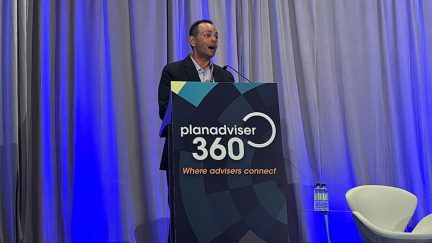Want the latest retirement plan adviser news and insights? Sign up for PLANADVISER newsletters.
Focus on DC Plan Benefits Renewed
According to Deloitte’s 13th Annual Defined Contribution Benchmarking Survey, a more stable economy and job market helped remove a degree of employee anxiety about setting aside money for the future. The research underlying the survey found average defined contribution (DC) plan account balances have reached an all-time high of more than $95,000, up from $85,600 in 2012. Survey results also show an increased number of employees are participating in defined contribution plans, with participation jumping 6 percentage points (77% in 2013 vs. 71% in 2012).
In addition, the No. 1 reason for lack of employee participation in DC plans is no longer due to an “uncertain economy/job market” (14% in 2013 compared to 24% in 2012), but instead a “lack of awareness and understanding” (30% in 2013 compared to 21% in 2012).
The survey found that companies are also showing renewed confidence in the economy and taking steps to make DC plans more accessible and attractive to employees. For example, immediate eligibility for matching contributions increased to 62% in 2013, up 6% from 2012. Unlike previous surveys, no plan sponsors indicated a suspended or discontinued company match. At the same time, “take advantage of the company match,” at 43%, was the top reason cited for employee participation, unseating “personal desire to save for retirement,” at 39%.
In addition, nine out of 10 plan sponsors made no changes to eligibility requirements, while 8% made them less restrictive in 2013 compared to 4% in 2012. Another 4% of organizations increased the maximum contribution percentages for participants in the past year.
When asked to indicate the most important objective of their DC plan, respondents chose “increasing participant savings rate” (32%) and “facilitating optimal retirement income replacement” (27%), in addition to improving communication and education efforts (19%). With increasing participation a key goal, plan sponsors continue to use automatic enrollment features for newly hired employees. The 2013–2014 survey shows 55% of plans have implemented an automatic enrollment feature. Overall satisfaction with the feature came in at 97%, due in large part to its positive impact—as rated by respondents—on plan participation rate (79%), participant awareness (57%) and average contribution rate (56%). With a goal of making it easier to increase savings, 46% of DC plans in the survey now include an automatic deferral increase feature.
When asked to rate the primary barrier to a more effective plan, the number one reason remained unchanged year-over-year—lack of employee understanding (30%). Looking at the top areas of confusion, the survey pointed to employees not knowing in what funds to invest (55%), followed by how much to save for retirement (35%).
When asked about the tactics used to encourage savings and raise awareness of assets needed in retirement, the highest rated approaches were general communications/education (73%) and group meetings (60%). Eighty-two percent of plan sponsors indicated that their recordkeeper/plan administrator offers valuable tools to educate employees. Taking it to the individual level, use of targeted communications (56%), individual meetings (32%), and personalized communications (23%) were all down from 2012 results.
Almost three-fourths of plan sponsors provide retirement income projections to employees to help illustrate where they may stand financially at retirement age and how increased savings can help them close any gaps. A majority of projections are delivered online, although there was an uptick in the number of plan sponsors sending income projections as separate communications, at 15% in 2013 compared to 9% the year before.
When it comes to individual financial counseling/investment advice, the good news is 62% of plans make this service available to all or some employees. The bad news is a relatively small percentage of employees take advantage of it (see “Retirement Plan Participants Not Utilizing Help”).
“While immediate eligibility for match and automatic enrollment continue to drive employee interest, there is still work to be done,” says Stacy Sandler, principal, Human Capital, Deloitte Consulting LLP. “Many employees perceive available education tools as too complex and intimidating. Retirement planning is unique for every individual, but many tools are created with a one-size-fits-all approach. Having the ability to recognize the gaps within the system is a solid first step in implementing effective remedies and reaching employees through their preferred channels.”
Deloitte’s 2013-2014 Annual Defined Contribution Benchmarking Survey was conducted electronically in conjunction with the International Foundation of Employee Benefits Plans and the International Society of Certified Employee Benefit Specialists. The survey’s 265 respondents are fairly evenly distributed by geography, size, industry and ownership status. The survey report may be downloaded from here.
You Might Also Like:

Plan Sponsors Remain Focused on Workforce Retirement Benefits

How to Establish Better Decumulation Options for Future DC Plans



